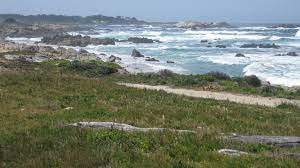~Patricia Palao Da Costa

Understanding Civil Society
Civil Society, or the Third Sector, distinguishes itself from the Public and Private Sectors in many ways. It is composed of organizations that are mission driven and (often) tax exempt, depending on the country in which it is located. Many refer to these organizations as nonprofits, nongovernmental organizations (NGOs), and community groups. Notable organizations include the United Nations (UN), American Red Cross, and the Goodwill. It might surprise readers to hear that some of these nonprofits are in fact profitable entities, and often use these funds to expand their reach and impact in their targeted populations.
Aside from their taxation code and their focus, these nonprofit organizations also have a unique internal organization and hierarchy. Unlike private corporations where a CEO has the final say on decisions, nonprofits have a board(s) of directors that elect and hire their CEO, and they have the final say on many internal decisions. The CEO handles the day-to-day goals and operations. Another significant difference is the roles of employees in nonprofits. Though many private and public organizations hire specific people to do certain tasks, tasks in nonprofits may be outsourced, divided among a few employees in different programs, or handled by the CEO themselves, depending on the size and budget of the organization. The “services” that these organizations deliver are often very different within the sector. Charities, or foundations, offer grants or financial assistance to other organizations or specific populations, while other community organizations will focus on one service (i.e., food banks offer free meals, health clinics offer free or low-cost health services, shelters offer room and board to the homeless, etc.). Other differences exist, but these are the main ones that someone should know before entering the sector.
Entering the Nonprofit World: Positions I’ve Held
After completing, and enjoying, a nonprofits introductory course as an undergraduate, I reached out to a friend for a reference to apply to the foundation they worked for. As soon as I got my foot in the door, later employment opportunities were easier to obtain because of my previous experience. Aside from sharing my social and policy interests, the positions I’ve held also serve to show the wide array of roles and organizations in the sector:
Fundraiser, Latter-Day Saint Philanthropies
In this faith-based organization, I solicited donations for collegiate scholarships, university program funding, and international relief projects.
Special Projects Intern, United Way of Utah County, Help Me Grow Utah
In this chapter-based, international organization, I created a resource database for employees to share research-based developmental information to parents in Utah.
Parent Support Specialist, United Way of Utah County, Help Me Grow Utah
In this capacity, I offered and scored developmental surveys to parents for children aged 0 to 5 and connected families to basic needs and developmental resources in the state.
Open House Coordinator, United Way of Utah County, Sub for Santa
I trained community volunteers to assist families in applying for Christmas assistance and organized community open houses where families could complete their applications.
EveryDay Strong Liaison, United Way of Utah County, EveryDay Strong
I helped design, plan, and implement an adolescent mental health initiative to guide families through mental health distress, uncertainties, and crises in their adolescents.
Education Coordinator, Boys & Girls Club of Santa Clarita Valley
In this chapter-based, international organization, I created after-school programs for children aged 6 to 18, along with a system of homework assistance and completion.
Program Director, Boys & Girls Club of Santa Clarita Valley
I trained and supervised program employees and designed and implemented developmentally-enriching programs and activities for children aged 5 to 13.
Operations Administrator, Make-A-Wish Foundation of the Tri-Counties
In this chapter-based, international organization, I run and send reports for the board of directors, CEO, and Director of Operations, as well as document weekly financials.
Helpful Courses & Useful Resources
Courses
- Nonprofit Management
- Civic Engagement
- Public Budgeting
- Leadership
- Program Management & Evaluation
Resources
Recommendations For Anyone Interested
Get connected! Most, if not all, nonprofits are very selective about who they hire because of their limited budget and time with training, preferring individuals who have nonprofit experience. If you don’t have prior experience, it will always pay off to get an “in” from a previous or current employee who can act as a character and/or professional reference. Find ways to show your connection to the organization from the beginning.
Be comfortable wearing multiple hats! If you are adaptable, appreciate change, and enjoy learning new skills, this is a great field for you.
Do your research! Missions are not just pithy statements that organizations create. Many application and interview questions center around your connection to a nonprofit’s mission and how your interests and knowledge align with it. If you’ve found a mission that you don’t mind getting paid less to do, you’ve found the right organization for you.
~~
If you are interested in this sector, and you have any questions or need a connection to an organization, feel free to connect with me on LinkedIn!







